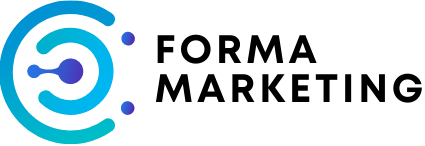A lot of people think that it’s a great idea to build a software company. They see big software companies and get inspired by their growth and valuations. HubSpot, Freshworks, Zoho, Microsoft, and so on. There are mobile app companies that are worth a billion dollars such as Calm, the meditation app.
There is more than what meets the eye here. There are too many variables that define the success of a software startup. First things first, you have to notice that most of these software companies are in losses except a few big ones. They have sky-high valuations in the stock market and the reason why the price keeps going up is because of a narrative and not because they make business sense.
People invest in these companies not because these are good companies to invest in, but because they need to deploy their capital somewhere to beat inflation and some of that capital goes into tech companies with strong narratives. Many of these investments are fuelled by inflation rather than capital being attracted by strong companies. (But let’s not digress and go in that direction, then I cannot stop talking about Bitcoin).
Many young people who have great talent in developing apps and writing code think that their capabilities are enough to build a software company. They come up with an idea, build it, and then struggle for years to convince the market that other people need their app. It takes a few more years of low traction for them to finally understand that their software is not as cool as they thought it would be.
Then they release discounted lifetime deals on sites like AppSumo and squeeze out some sales. Some revenue to console them for the efforts they have put into developing the app. Then they need to serve these painful customers who didn’t buy the software because it was great but because it was a great discount. They never needed the software in the first place.
The biggest reason why most software companies fail is because there is no product market fit. They built something that the market doesn’t want. Y Combinator’s tagline is: „build something that people want.” It’s easier said than done. The developers didn’t intend to build something that people didn’t want. They just had the wrong understanding of what the market wants.
They didn’t have that understanding because they didn’t have a community. They didn’t talk to their target customers. It’s not enough that you talk to a few people and ask them what they want in terms of software products. It takes years of closely observing the market dynamics and people’s challenges and frustrations. One needs to talk to 100s of people if not thousands. And it’s difficult to do without a personal, community, and some coaching products to fuel this funnel.
That’s why I believe everyone should start with coaching and services first before diving into building software. It is difficult to build a strong and serious community with just content marketing. When you have coaching products like courses and mastermind programs, you attract a serious crowd. Interacting with them will give you insights into their challenges and needs. This information will help you build the right products for them.
For example, if I attract coaches into my community, I will have an idea about the challenges of coaches. Coaches have a problem building landing pages. They don’t want the best-designed landing page in the world. They just want a simple landing page that can give information, host a video, and collect leads. For this they have to first get the copy done by a copywriter, then a design made by a landing page designer, the landing page coded and hosted by a front-end engineer. This is a long cycle that slows down their business.
If I want to build a landing page tool for coaches, I wouldn’t complicate it with a custom builder like Elementor. Most of the coaches cannot build an Elementor landing page because it has too many features and options. I would make a simple form that they can fill out that outputs a ready landing page for them. The only customization options would be a few well-designed templates and color themes. This gets the job done which is their requirement. I would also be a customer of this product because I struggle to develop landing pages quickly and fast myself.
People who build platforms and apps after being in the coaching and service industry usually get the product-market fit of the product right the first time. One good example of it is Skool.com by Sam Ovens. Sam started with freelancing and agency. Then he got into the coaching business. He worked with so many coaches personally and his approach was to build communities. The community ideally should have a learning management system to host courses, a calendar for live events, notifications a mailing system, and a discussion forum for clearing doubts.
Sam was using Facebook Groups, Kajabi (an LMS system), ActiveCampaign, and Google Calendars to run his coaching programs. He had the need himself and he observed that other coaches who are following a similar path had the same challenges. With this clear understanding of needs, he built Skool. He built it so well that it started picking up immediately. Even we use Skool for now. Alex Hormozi has recently invested in Skool.
The personal brand and community not only helped him understand the market needs clearly but also gave him the needed distribution to get the initial customers. Starting with coaching and services also gave him the needed seed capital to invest in building Skool. Many startup founders depend on seed investments from angel investors and VCs to get the initial capital. Many times the VCs end up changing the direction of the company and founders do not have enough freedom during the initial phases of the startup.
ClickFunnels, Hyros, FlexiFunnels, and many such successful software products were built by people who were into coaching and services at the early stages of their careers. They instinctively understand that software is about solving problems for the customers and not just having a tool with a lot of features in it.
I intend to build software in the future, but not anytime soon. I am going to get the market understanding, the distribution, and the needed seed capital for product development from my coaching business before I start building software. You will get to see my journey as I do it.
In another post, I will dive deep into the differences between software and platforms.









